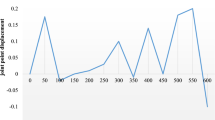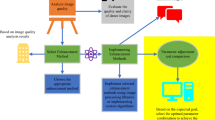Abstract
Neural network recognition algorithm is a deep learning-based convolutional neural network, which has been applied to target detection, image recognition, sound recognition and other fields. Although the recognition technology of convolutional neural network has been gradually stabilized, it is mainly implemented in single-machine serial mode. Therefore, there will be problems such as too long training time and insufficient memory capacity. According to the previous work, this paper has carried out related research and obtained some useful results. This paper focuses on the introduction of image recognition technology based on neural network algorithm. At the same time, this paper proposes a fast real-time image recognition algorithm, which has high recognition accuracy. In this paper, the existing algorithms mentioned in the paper are analyzed, the characteristics and shortcomings of all algorithms are summarized, and the appropriate combination of algorithms is selected for specific problems. On this basis, the acceleration method of artificial neural network is used to improve the algorithm of convolutional neural network image recognition technology. With the continuous development of education and the increase of the number of students year by year, the effect of classroom teaching becomes particularly important. Therefore, modern information technology is used to transfer the classroom teaching mode to the network and realize a new method of online remote online dance teaching. According to the actual situation of dance teaching, the advantages of multimedia dance teaching are analyzed. The software of multimedia dance teaching system is tested comprehensively, from the aspects of computer system memory occupancy rate and temperature, to test whether the activities of B/S mode multimedia dance teaching system meet the expected goals and requirements of each core module of multimedia dance teaching system.




Similar content being viewed by others
Data availability
Data will be made available on request.
References
Acharya UR, Oh SL, Hagiwara Y et al (2017) A deep convolutional neural network model to classify heartbeats. Comput Biol Med 89:389–396
Alimjan G, Sun T, Liang Y et al (2018) A new technique for remote sensing image classification based on combinatorial algorithm of SVM and KNN. Int J Pattern Recognit Artif Intell 32(07):1859012
Duan S, Hu X, Wang L et al (2014) Hybrid memristor/RTD structure-based cellular neural networks with applications in image processing. Neural Comput Appl 25(2):291–296
Hornecker E, Honauer M (2018) Creating performance-oriented multimedia projects as part of an interdisciplinary teaching practice. IEEE Multimed 25(2):93–103
Konda SR, Kumar V, Krishna V (2016) Face recognition using multi region prominent LBP representation. Int J Electr Comput Eng 6(6):2781
Lee KH, Lee YJ, Choi H et al (2012) Parallel data processing with MapReduce: a survey. ACM SIGMOD Rec 40(4):11–20
Noblitt L, Vance L, Smith MLD (2010) A comparison of case study and traditional teaching methods for improvement of oral communication and critical-thinking skills. J Coll Sci Teach 39(5):26
Othman M, Hussain FM (2013) Designing prototype model of an online collaborative learning system for introductory computer programming course. Procedia Soc Behav Sci 90:293–302
Prabhanjan S, Dinesh R (2016) Handwritten devanagari characters and numeral recognition using multi-region uniform local binary pattern. Int J Multimed Ubiquitous Eng 11(3):387–398
Raheb KE, Stergiou M, Katifori A, Ioannidis Y (2019) Dance interactive learning systems: a study on interaction workflow and teaching approaches. ACM Comput Surv (CSUR) 52(3):1–37
Yaghini M, Khoshraftar MM, Fallahi M (2013) A hybrid algorithm for artificial neural network training. Eng Appl Artif Intell 26(1):293–301
Yamashita R, Nishio M, Do RKG, Togashi K (2018) Convolutional neural networks: an overview and application in radiology. Insights Imaging 9(4):611–629
Yang D, Alsadoon A, Prasad PC et al (2018) An emotion recognition model based on facial recognition in virtual learning environment. Procedia Comput Sci 125:2–10
Zhang Y, Zhang E, Chen W (2016) Deep neural network for halftone image classification based on sparse auto-encoder. Eng Appl Artif Intell 50:245–255
Author information
Authors and Affiliations
Corresponding author
Ethics declarations
Conflict of interest
The authors declare that they have no conflict of interests.
Ethical approval
This article does not contain any studies with human participants performed by any of the authors.
Additional information
Publisher's Note
Springer Nature remains neutral with regard to jurisdictional claims in published maps and institutional affiliations.
Rights and permissions
Springer Nature or its licensor (e.g. a society or other partner) holds exclusive rights to this article under a publishing agreement with the author(s) or other rightsholder(s); author self-archiving of the accepted manuscript version of this article is solely governed by the terms of such publishing agreement and applicable law.
About this article
Cite this article
**, G. Application of image recognition based on neural network algorithm in multimedia dance teaching. Soft Comput (2023). https://doi.org/10.1007/s00500-023-08474-5
Accepted:
Published:
DOI: https://doi.org/10.1007/s00500-023-08474-5




